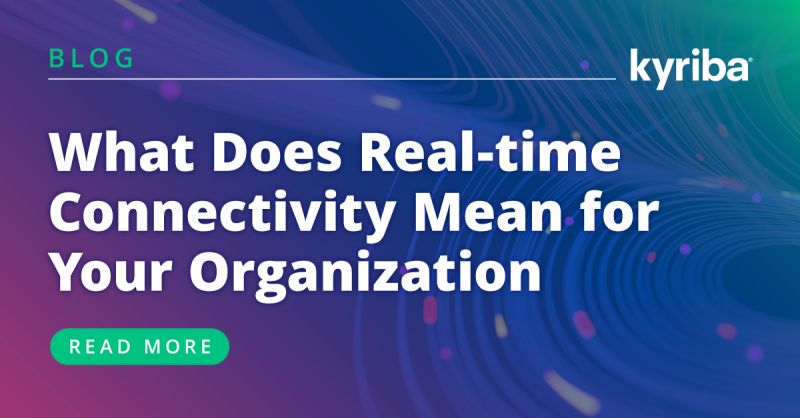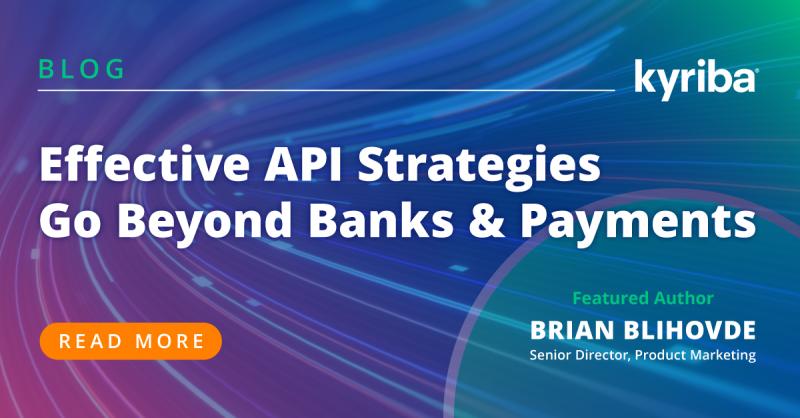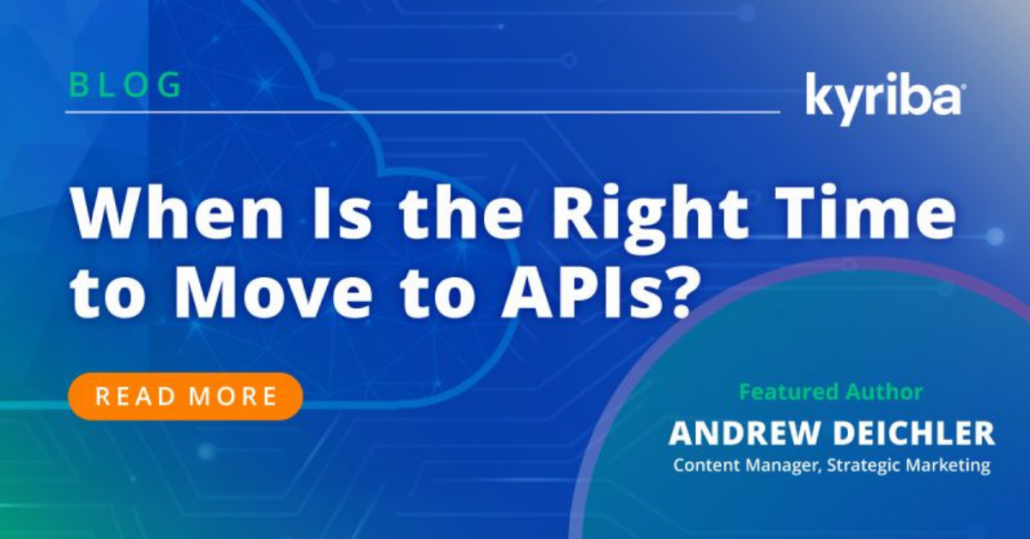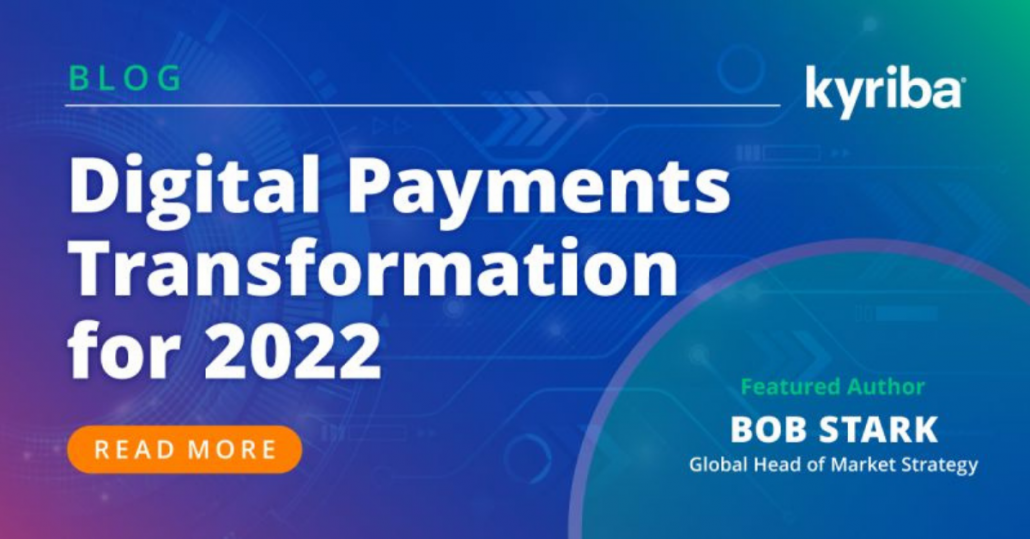What Does Real-time Connectivity Mean for Your Organization?
08-08-2022 | treasuryXL | Kyriba | LinkedIn |
Nowadays if you work in treasury, probably not a day goes by without you seeing a social post or article from your subscribed newsletters on the topic of real-time Bank API. It stands for the future of bank connectivity, and it will change the way data is exchanged between corporates and banks. Trent Ellis, Senior Solution Engineer at Kyriba, spends his time assisting clients to evaluate what works the best for them from a solution point of view, with both their current and future business needs in mind. In his discussions with clients and prospects, bank connectivity has always been a focus area and recently he noticed a growing interest in real-time Bank APIs.
By Trent Ellis, Senior Solution Engineer

When it comes to real-time bank connectivity, the first thing I usually tell my clients is that it’s important to delineate between the different data flows such as inbound balance reporting, transaction details, confirmation reporting and outbound payment initiation. When an organization plans to make real-time bank connectivity a reality, the first thing they should do is to look at their data flows from daily operations. Identify and determine what data would benefit from a real-time update? Which items are critical for that real-time treasury decision making? Where are you going to maintain the balance and transaction data once it is received or payment data prior to it being transmitted to the bank?
Next, because many banks have grown their footprint by acquisition, bank accounts held in different regions (even regionally within a country) can be on different platforms with different technology. Therefore, within a single bank, API readiness can have a different status for different subsets of bank accounts based on branch and geographic location.
Now that the bank may have made an API connection available, how are you going to connect to it? Do you look at internal technical expertise and availability? Do you look to a third-party vendor? Consider a specialist that just does API connections or a TMS vendor that has other integrated modules and additional functionality beyond just the bank connection for statements and/or payments?
Real-time Bank Reporting, what does this really mean?
Banks are now offering bank balance API’s as well as transactional statement APIs, but sometimes not (yet) both. It’s more than likely not the same as what you would get from that same bank in the form of a BAI or MT940 standard bank statement as banks are still working on what data becomes available through the API. Bank balance reporting is important for real-time liquidity monitoring but will not always help your treasury or AP team confirm the status of a cleared payment, or the status of an important cash credit.
Yes, an API can deliver data in real-time but is the underlying platform that holds that data providing real-time data? Some banks are providing their “real-time” data on a predefined schedule throughout the day which means it is not what most would consider “real-time”. True real-time reporting requires process changes at the bank. Decreasing update time from day to hours or within the hour is an improvement that is easier to absorb without restructuring the process.
Real-time payments, what does this really mean?
Real-time payments are payments that are cleared and settled nearly instantaneously. Real-time payments are generally facilitated by domestic or regional payment infrastructures on a 24x7x365 basis including weekends and holiday.1
Many may not be aware that globally real-time payment infrastructures have been around for as long as 40+ years, and real-time payments can be enabled via FTP or API based on Bank / FI’s offerings and the connectivity option preferred by the corporate customer. Relatively, it has been a recent development in the US payment ecosystem. In November 2017, The Clearing House launched the first real-time payment infrastructure RTP® network in the US, built on the same Vocalink technology that powers the UK’s Faster Payment System. The RTP® network was built for financial institutions of all sizes and serves as a platform for innovation allowing financial institutions to deliver new products and services to their customers. Financial Institutions can integrate into the RTP® network directly, through Third-Party Service Providers (TPSPs), Bankers’ Banks and Corporate Credit Unions.2 The US Federal Reserve will be launching its real-time payment infrastructure FedNowSM in the 2023 – 2024 timeframe.
Globally real-time payments are growing at a double-digit growth rate across all major markets. Adoption of real-time payments will continue to be use case specific, especially for use cases that are underserved by existing payment infrastructures. In the long-term, we should expect real-time payments to be an important part of corporate’s payments mix alongside other traditional payment systems. Like other real-time payment infrastructures globally, the RTP® network has been increasing its transaction limits, which currently stands at $1million. This makes it more relevant for B2B / Corporate payment use cases – a very good example from our client HUNT Companies being the intracompany transfers for efficient deployment of working capital. However, this also means that if you need to make payments with value greater than $1million, you would need an alternative type or method for the time being. You cannot rely on the RTP® network as your only means to make payments and will still require connections for other payment types such as Wire, ACH and international formats.
Recommendations to clients
The world is certainly migrating towards real-time bank connectivity, but organizations will ultimately require various connectivity strategies to fit different geographical and banking technology. In 2022, most real-time Bank APIs are an incremental addition to existing connection methods and formats for both statements and payments. Currently, Bank APIs are not a replacement for other options, which are still required to get a complete picture of prior day statement activity and/or ability to send all required payments. Therefore, my recommendations to my clients always remain the same:
- Identify and evaluate your data flows.
- Where does real-time data make sense?
- Talk to your banking partners and understand their offerings in detail.
- Ask the question: Do your internal requirements align with the bank’s offerings?
- Where are you going to house the data that is received/transmitted via the real-time Bank connectivity?
- Talk to vendors that have teams of people that do this every day and evaluate their perspectives and subject matter expertise.
Find out more details on Bank APIs from the Kyriba Developer Portal, and watch any time an on-demand webinar on everything you need to know about APIs: Bank Connectivity and Beyond.
1 Real-Time Payments: Everything You Need to Know. Paymentsjournal.com. 2021
2 The RTP® Network: For All Financial Institutions. The Clearing House.















